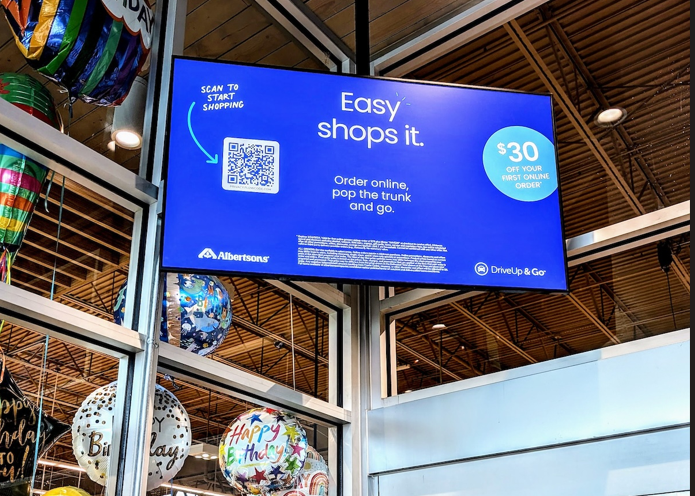After years in the trenches, Russell Young has hard-earned insights into how the battle to launch in-store retail media networks is won or lost. And although this is a moment of (justifiably) great expectations—U.S. in-store digital retail media ad spending is projected to more than double from $430 million in 2025 to $1 billion by 2029—he cautions retailers to curb their enthusiasm and roll up their sleeves.
“Industry pundits who’ve never actually done it talk about how big the in-store opportunity is,” Russell says. “But no one ever talks about the process and the pain involved.”
With more than two decades of experience in helping retailers navigate the path from pilot to nationwide rollout, Russ knows that the road can be bumpy, fraught with wrong turns and dead ends. As Senior Vice President of Business Development at STRATACACHE, he has collaborated with some of America’s largest retailers through successful in-store retail media launches.
In this candid conversation, Russ offers his insights into what really works—and what causes promising in-store retail media initiatives to fizzle before they achieve scale.
When retailers set out to build an in-store retail media network, where are they most at risk of going wrong from day one?
The biggest mistake is operating in a silo. Don’t just be the team who says, “Hey, we’ve done really well building out retail media and these other digital channels, so let’s go do the same thing in the stores.”
When STRATACACHE works on a pilot with a retailer, early in the process we bring everyone to the table–leadership, store experience team, front of store team, construction, facilities, IT—all of these teams that are going to play a key role, and involve them so that everyone learns together during the pilot.
Otherwise, you taste success and suddenly hit obstacles. Some key players may end up saying, “Wait, I didn’t know this was going into a hundred of our stores.” You didn’t check the boxes. That prevents you from scaling.
Step one is to establish a sound financial model. What’s the secret to doing it well?
You have to be lean upfront and have realistic expectations on revenues. If a retailer is operating within five states, don’t expect national budgets to come your way. You’re not going to drive a $15 CPM when you’ve got barely a hundred people coming through the door a day. The numbers just don’t work.
Validate, validate, validate. I can put a four-screen display or a one-screen display inside of a placement. Just because it’s three more screens, I’m not selling it at a higher rate. When you take that big investment at just that one store and multiply it out by 2,000 or 5,000 stores, it breaks the model.
What else undermines pilots from scaling successfully?
Don’t go down the path of a three-month or six-month pilot without a means to execute a large-scale rollout at the end. Be budget ready. Have your finances in a row and know that if this thing hits, you’ve got capital available and are ready to move without losing momentum—not “let’s spend another year, we’ve got to do an RFP, we’ve got to request capital funding.” If that’s where you land, that wasn’t a pilot, that was just a test.
Change of initiatives within the organization can also derail scaling. It’s a fact of life—corporate leadership shakes up and priorities change. When that happens, rather than blaming bad timing, I tend to look at it personally and say, “We. as the in-store retail media partner, just didn’t do a good job of proving how dang valuable this is. We did not show how critical this is to the business.”
To prove that value proposition, we have to bake measurement into the pilot with the retailer from the get-go. It allows retailers to do quick A/B testing to see what behavior they can change such as cross-marketing and driving shoppers into categories they may not normally visit. We’re helping them identify opportunities that become part of their go-forward plan.
The retailer has proven the concept, gotten budget approval, and aligned their teams. What might catch them off guard as they begin scaling up?
Content. Primarily feeding the beast. It’s just as important to think about how you’re going to feed that beast on a daily basis. Beyond your campaign, and your marketing period—what comes next? How do you keep feeding this and keep it relevant for your guests?
As you’re scaling, your joint business plans with brands should include the in-store component. Bring them in, give them opportunities, rely on sponsorship models, get them into those plans.
But it’s about more than just paid media—that means owned media, too. If you’re trying to drive vaccines at your pharmacy, for example, or pushing other important business initiatives, what are those messages that need to go in there? Have a plan for feeding that and making it an important part of the overall program if you want your rollout to succeed.
In terms of that scalable-ready content, any advice for making in-store really pop while integrating it into a wider omnichannel strategy?
Retailers always need to think about the customer full funnel—whether it’s your app, your dotcom, or in your store. But don’t subscribe to the philosophy of, “Whatever I’m doing online, I’ll just do the same thing in store.” That doesn’t work.
What do most people want out of the screens? Price, value and where to find it. Don’t ask the customer to spend five minutes watching a video on how you grow your vegetables organically. Help them stretch their dollar. Help them find the deals. Show them where they are. Those are easy data feeds you can bring into dynamic creative to deliver meaningful experiences that drive conversion.
Looking forward to 2026, what can we expect in terms of retailers scaling in-store networks?
If the interest I’m seeing on a daily basis from retailers is any indication, 2026 will be a pivot point for scaling in-store digital. It’s no secret why: The biggest retailers are seeing demonstrable ROI on their scaling initiatives. Major CPG brands using those retailers’ extensive in-store digital are seeing up to 15% sales lift. Factor in advances in measurement and the potential is undeniable. The word is out: We’re at a moment when retailers either need to achieve scale or risk getting left behind.
Russell will speak at What’s in Store for Retail Media Networks, part of NRF’s Big Show in New York on January 10, 2026.













